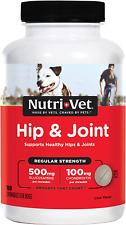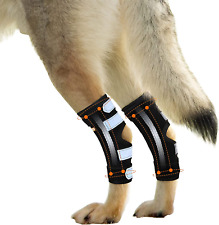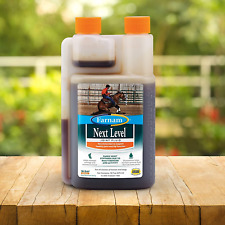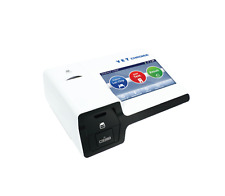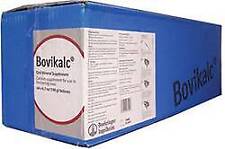Horse-Logical Trailering
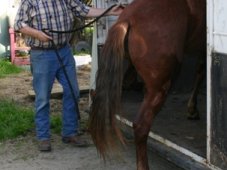
You and your horse can have your heeding groundwork down cold. The two of you can be hooked onto one another and staying together in the moment stride by stride and all that. You can have the most super relationship going with your horse but still he may be apprehensive about loading into a trailer.
The problem may not have anything to do with the way you ask or tell the horse that you want him to load into the trailer. It may simply be that, in the horse’s experience, the specific trailer in front of him, or possibly any trailer he has ever been inside, is not a particularly nice place to be. So he just plain doesn’t want to go there.
When most people think about trailering their horse somewhere, the first thing that comes to mind is whether the horse will get in the trailer in the first place. Then they think about whether he will get in the trailer to get home. The way to get ahead of this game is to consider the trailer from the horse’s perspective before you buy the trailer in the first place. Then prepare the horse for the experience and make it as comfortable an experience as you can.
People make very different trailer buying decisions depending on whether the horse in question is their very, very, very best friend. Or he is a customer’s horse they are being paid to haul and that is the deal. Or what is currently stylish when they go to the shows because there’s always something different that’s stylish when you go to different kinds of shows and people want to look good and not get laughed at and all that. All the horse cares about is what it feels like when he gets in it.
From the horse’s perspective, the most common mistake I see horse luggers of all types make is that they have not matched their trailer and hauling vehicle with the right hitch so that the trailer rides level. It does not matter if you have an expensive rig or a cheap one. If the trailer is sitting up in front (the mistake is usually "up" rather than "down") the whole trip there and back is uphill all the way from the horse’s perspective. The fanciest suspension system in the world will not make it any more comfortable for the horse.
Another thing people "mythunderstand" is how to drive their trailer to minimize the horse’s balance issues. When I was in my twenties, I sold a 2-year-old mare that had never been in a trailer. I told the lady who bought her that she needed to drive carefully because this was the horse’s first trip. She didn’t have far to go and assured me she would not drive over 30 miles an hour. Pretty soon, I get a frantic phone call from a filling station on the interstate saying that the horse had gone out over the tailgate and was running around scaring away customers.
It took awhile to calm the filly down and reload her. They only had another 10 miles to go so I told the lady I’d ride in back with the filly to keep her calm. When the lady’s foot hit the accelerator, I went flying backwards and slammed into the tailgate. Then she made a sharp left turn that threw me into the side of the trailer. I was screaming at the top of my lungs but she couldn’t hear me. She hit the accelerator again, took the car up to 30 miles an hour as fast as she could then just ran there until she slammed on her brakes. She thought that the only thing that mattered about driving was the top speed. You can run a truck and trailer along at 70 miles an hour as long as you have plenty of time and space to accelerate and decelerate slowly and smoothly and not throw your horse around.
You need to accelerate and decelerate and turn in a way that allows the horse to feel secure as that is happening. Whether the horse is thinking about training pressures or maintaining his balance, his "feel" is along a primary line that runs along his backbone. If you haul the horse with a breast bar in front and a butt bar or chain behind he has something to lean against for balance as you speed up or slow down. The same is true if you are hauling the horse facing backwards.
The horse’s stability is back to front or front to back, not side to side. When I first started in business, I thought I could make more money hauling customers to shows if I had a truck big enough for a bunch for horses instead of just two. So I bought an old International tomato truck and tied one horse in facing left, the next facing right, and so on until I had eight of them in there. I didn’t get too many horses hurt because I didn’t haul that way for too long before I figured that I was getting to shows with horses all sweated up and working uneven. So I gave up on sideways hauling and we converted the truck to a bunkroom. It wasn’t fancy but we were one of the first to bring along our own sleeping quarters to the shows.
Hauling horses in slanted trailers has become popular because it is people friendly. You can get more horses in a shorter space, it’s easy to load because you’re going through a big wide door instead of a narrow space, they are easy to clean out, and, because the horses take up less space, you can put a tack room or living quarters up front without getting the rig too long. The problem is that the horse is facing an angled corner and has an angled wall behind him. The only way for him to handle a start or stop is by leaning against the partitions on either side of him.
When slant loads first came out, I wondered why I had not thought of that. Seemed like such a good idea I even went out and bought one. We loaded up a couple dressage horses and drove a couple hundred miles to a show. When we got there, we found that both horses were uneven. Not sore, not lame. They just didn’t feel smooth and even going in both directions as they had at home. It took quite a lot of riding to work them out if it. If you are just doing short local hauls, you might not notice how riding sideways affects your horse. But if you haul your reining horse halfway across the country, you are going to arrive and find he is not turning as well to the left as he was when you left home.
It did not make very many trips before I gave up on slant loading, too, and went back to straight hauling. But even straight hauling can be bad if the horse is too big for the trailer. You need plenty of room for the horse’s head, enough room for him to move his feet a little, and good solid areas he can lean on as he tows down the road.
To be horse friendly, a trailer also needs good ventilation without being drafty. You do not want any jets of air hitting the horse, especially around his eyes. The center partition should not go all the way to the floor. You want to make sure the floor is not slippery so he can maintain his stability but do not use hamster bedding to soak up urine and manure. The dust that wood shavings create in that confined space is not horse friendly. We use green sawdust because its high moisture content keeps the dust way down. If you have to use dry shavings, wet them down before the trip.
If you are going to haul your horse, think about how comfortable he is going to be and how much you care about how comfortable he is going to be. Make sure you have prepared him for the experience by training him to walk up ramps and back down ramps or to step forward and up then back and down so getting in and out of the trailer will not be a big deal. Get him comfortable walking into narrow spaces and into dark spaces. All that heeding work is good for both of you. Then make sure his first ride is the most comfortable one you can give him. After that, you should not have a problem loading him each and every time.



